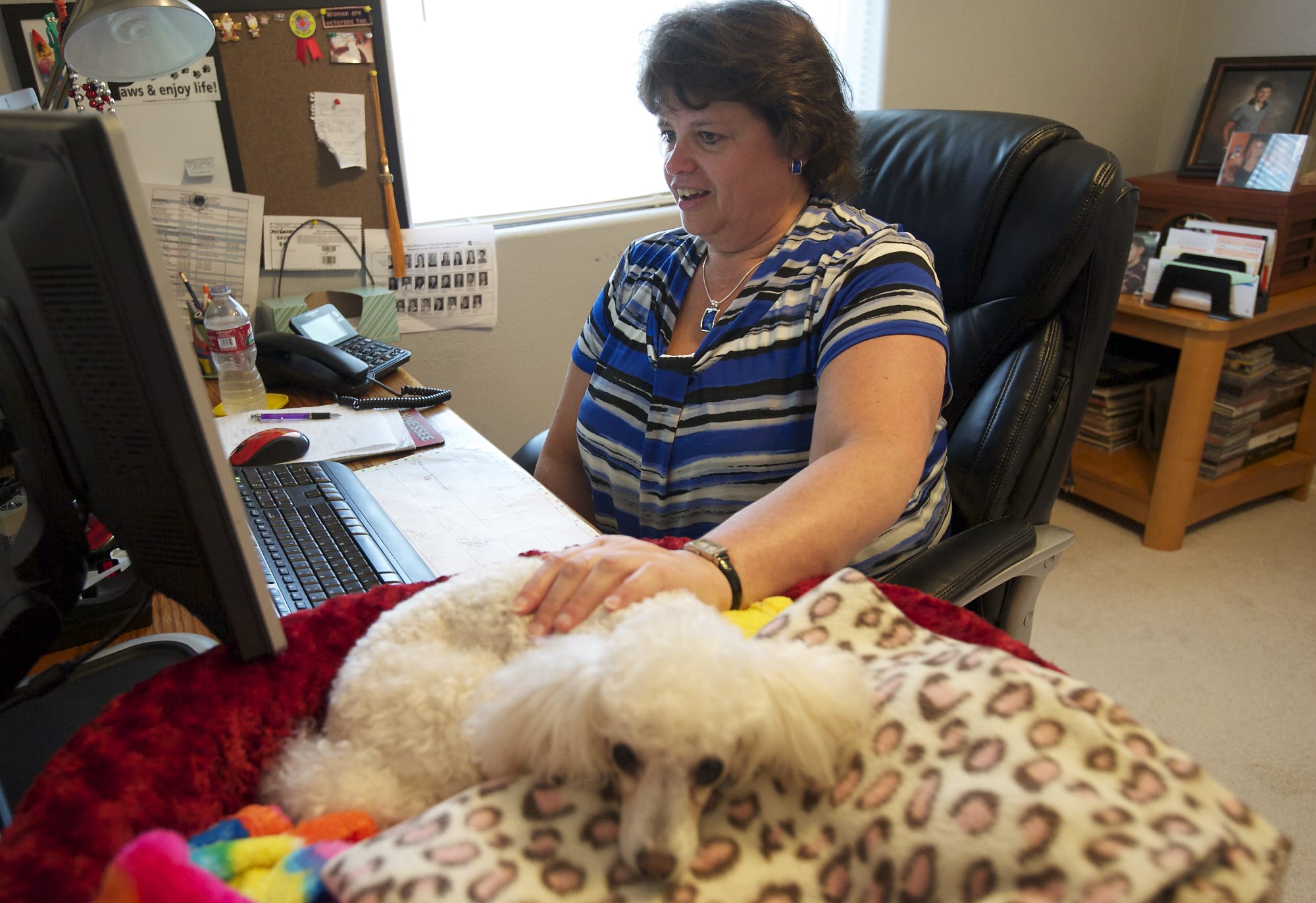Tami Marshall’s love of her job has only increased since she began telecommuting from her Hazel Dell home about six months ago.
“Now, not only do I have a dream job, but a dream location,” said Marshall, a medical coding specialist for PeaceHealth, Clark County’s largest employer. She converted a spare bedroom into an office, where she begins her work day at 6 a.m. with her dog, Jazzy, perched atop her desk.
Marshall doesn’t have much company, both figuratively and literally. Although a growing number of Clark County residents work from home, the telecommuting trend hasn’t taken off as predicted. Twenty years ago, conventional wisdom was that the number of telecommuters would inevitably expand, thus curbing commutes and helping employees accommodate family demands. Yet many employers continue to approach telecommuting with wariness, and some, like Yahoo, have made headlines by revoking the option.
According to Gallup’s 2013 State of the American Workplace report, 39 percent of employees surveyed reported spending at least some time working remotely. The number of Clark County residents telecommuting has grown by nearly 38 percent, but remains a mere sliver of the workforce, according to U.S. Census Bureau figures. In 2005, 4.9 percent of Clark County workers, or 9,112 people, worked from home, including those who were self-employed. In 2012, that figure grew to 6.6 percent, or 12,551.



